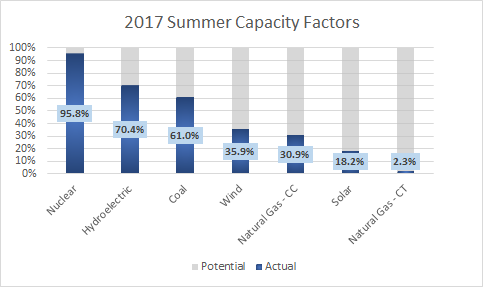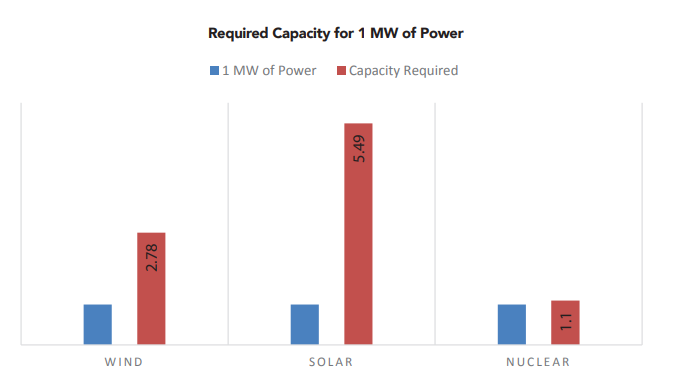Turkey Point Nuclear Plant Will Operate for 80 Years, While Wind Turbines Still Last for 20 Years
According to the Daily Energy Insider, the Nuclear Regulatory Commission (NRC) has approved Florida Power & Light’s proposal to add an additional 20 years of operation for the Turkey Point Nuclear Generating Units 3 and 4 near Miami, Florida.
This is the first time the NRC has approved renewed licenses for operation extending the lifetime of a nuclear plant from 60 to 80 years, but it may well be the beginning of several companies seeking longer operating licenses for their existing nuclear facilities. As a result of the renewal, Turkey Point Unit 3’s renewed license now expires on July 19, 2052. Unit 4’s renewed license expires on April 10, 2053. The nuclear plants generate enough electricity to power 900,000 homes.
The long useful lifetime of nuclear plants is why they are a lower cost option than wind turbines or solar panels, which only last 20 to 30 years, respectively. Not only do nuclear plants last up to four times as long as wind turbines, they will generate much more electricity than wind turbines or solar panels while they are actually working.
In Minnesota, nuclear power plants generated 95 percent of their potential output, or capacity factor in energy lingo. In contrast, wind produced just 35.9 percent of its potential output, and solar produced just 18 percent.

At these capacity factors, it would take 2.8 MW of installed wind capacity to equal the same energy output as 1 MW of nuclear, and it would require 5.25 MW of installed solar capacity to produce the same amount of electricity as the nuclear plant. This comes at an enormous price tag.

The U.S. Energy Information Administration assumes the cost of building one MW of wind costs $1.6 million, the cost of one MW of solar is $1.9 million and the cost of one MW of nuclear is $6 million.
When we account for the intermittency of wind and solar, the cost of building the necessary capacity to generate 1MW of electricity for wind, solar and nuclear to $4.5 million, $10.5 million and $6.25 million, respectively.
When the shorter operating lifespans for wind and solar are accounted for, however, the total cost of rebuilding wind turbines every 20 years brings the cost to $13.5 million per MW, and replacing solar on 30-year timescales results in a total cost of $21 million to generate electricity for 60 years. This cost increases to $18 million per MW for wind, $28 million for solar, and $6.25 million for nuclear if the costs are spread over 80 years.
Nuclear power plants will obviously require maintenance, which can be very costly, but nuclear power is clearly a lower-cost and longer-lasting option for sources of electricity that don’t emit carbon dioxide than wind or solar, and nuclear power is far more reliable.
This is why Minnesota should lift their ban on new nuclear power plants as soon as possible. It simply doesn’t make sense for lawmakers to claim that climate change is an existential crisis while simultaneously refusing to legalize the one source of electricity that can reliably and affordably power our society.